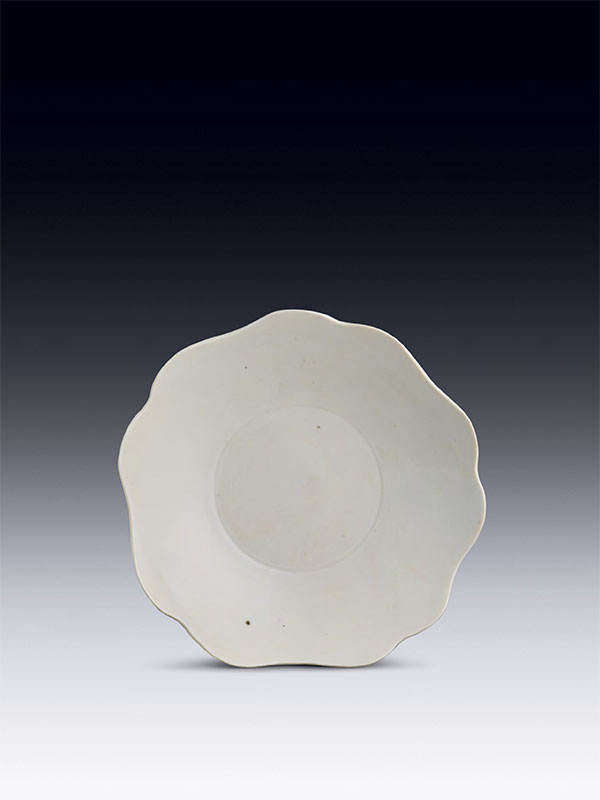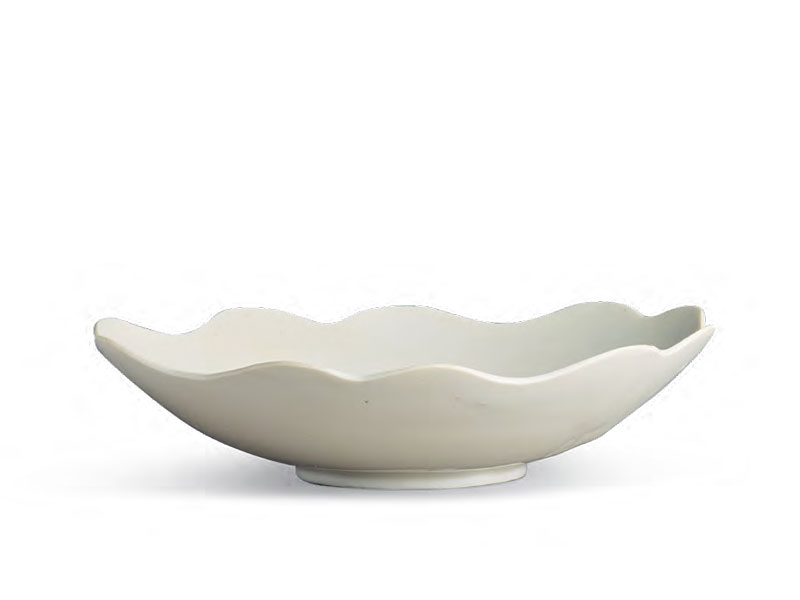FOLIATE XING SAUCER
邢窑花口盘
A white porcelain dish, the gently rounded sides supported on a ring foot. The edge of the rim is sharply cut into a tenfold rim. The dish is completely undecorated and covered in a thin white glaze with the near-white body only exposed on the foot ring. A number of characteristic ‘tear.drop’ markings in the glaze are clearly visible on the dish.
Xing ware, the first ‘true’ porcelain, is the predecessor of Ding ware. This striking, pure white stoneware dish was made at the highly regarded Xing kiln in Hebei province, which produced ware that “…seems to have been favoured for wine”.[1] According to Kerr: ‘The great fame of Xing ware rests in its designation as the earliest true porcelain made in China, and hence in the world. […] Xing wares are the whitest of early northern porcelains, both as regards body and glaze.’[2] A comparable ‘flower-shaped’ ten-lobed Xing dish is in the Meiyintang collection.[3]
- Watson, W. Tang and Liao Ceramics, Thames and Hudson, 1984, p. 36
- Kerr, R. Song Dynasty Ceramics, Victoria and Albert Museum Far Eastern Series, London 2004, p. 40
- Krahl, R, Chinese Ceramics from the Meiyintang Collection, Volume Three (II) London 2006, no. 1414, p. 414.


